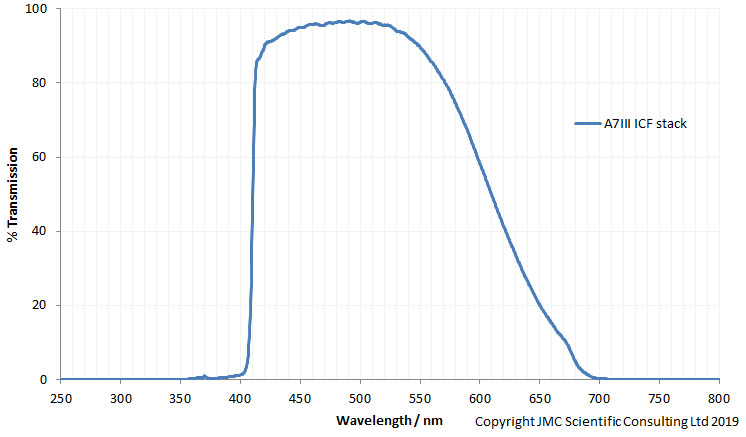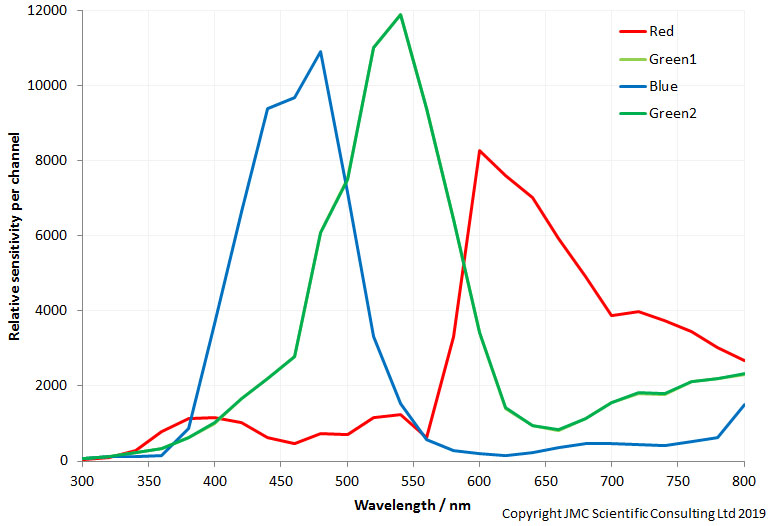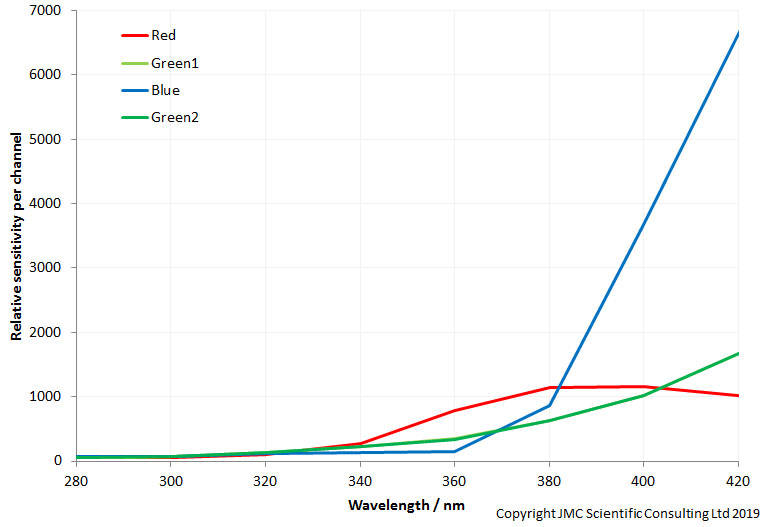This is the second post in my thread on Project Mirrorless, and covers the conversion of my Sony A7III camera to multispectral imaging. Just for background, the A7III uses a different sensor design to most cameras – a Back Side Illuminated (BSI) sensor – which should offer increased sensitivity for short wavelength UV imaging, compared to conventional camera sensor designs.
Sometimes one has to move outside of ones comfort zone. At least that’s what everyone keeps telling me. I’m used to using a digital SLR for my photography. This was a natural progression from using film SLR cameras, as I knew the layout of the cameras, and was used the feel and ergonomics of them. However digital SLR cameras have a big issue when trying to use certain lenses on them, and that is the issue of flange to focal plane distance (I’ve discussed that more in the first of the posts on Project Mirrorless, here). This shorter flange to focal plane distance, was why I chose to go with the Sony A7III rather than an SLR with a BSI sensor. More on whether that was the best decision later…..
Back to the conversion. The whole idea behind converting this camera for multispectral imaging, was to provide enhanced UV sensitivity because of the BSI sensor design. This type of sensor should have much more sensitivity to short wavelength UV, at 350nm and below, than a standard type of camera sensor for which the sensitivity drops rapidly between 400nm and 300nm even when the Bayer filter has been removed. For instance my Canon EOS 5DSR cameras have a standard sensor, which I have discussed spectral sensitivity measurement of here, and gone into more details on in my publication in the Royal Photographic Society Imaging Science Journal here.
Normally when converting a camera for multispectral imaging, the filters in front of the sensor – usually an anti-aliasing filter, and an UV/IR blocking filter – are removed. These stacks are deigned to let through visible light and block non visible light such as IR and UV. The transmission spectra for my A7III filter stack is given below (referred to as the ICF stack);

Removing the ICF stack leaves the sensor, without the internal filters. Normally with a multispectral camera conversion, this is what is done. However, the sensor itself has a cover glass on on it, to provide a degree of protection to some very delicate electronic circuitry, but also with some cameras to form part of the optical low pass filter array. The issue for UV imaging is that this sensor cover glass can absorb loads of UV, and in fact can start absorbing at fairly long wavelengths. As such for optimal UV imaging, and especially for short wavelength UV imaging, this cover glass needs to be removed and replaced with something which doesn’t block the light. The transmission spectra of my sensor cover glass from the Sony A7III is shown below, along with a spectra for fused silica, and it can be seen that the A7III cover glass blocks loads of UV;

This is where my ‘go-to’ camera convertor guy comes in. For my camera conversions I use MaxMax (Llewellyn Data Processing, NJ, USA) as he is one of the few modifiers offering monochrome conversions. In a monochrome conversion this cover glass is removed, and replaced with something which transmits light down to 300nmm. However in a normal multispectral conversion, where the Bayer filter is not removed, the cover glass is left on the camera as removing it is a high risk process. However in my A7III conversion I requested removal of the cover glass and replacement of it with a fused silica window (which offers good transmission to well below 300nm) to give the best short wavelength UV sensitivity possible. The transmission of light through the fused silica cover glass is given in the graph above. So I ended up with a converted Sony A7III camera, with the only filter in front of the sensor being a fused silica cover glass to maximize UV sensitivity. As an aside, I had the cover glass remove on my multispectral EOS 5DSR as well, but that was replaced with a Schott WG280 window, as the sensor itself has no sensitivity below 300nm.
What was the end result of this conversion – how did the sensitivity of the A7III look, after all this work? I measured this and it is shown below;


At first glance the BSI sensor in A7III doesn’t look much different from a conventional sensor, at the short wavelength end of the UV (below 350nm). However keep in mind here that the sensor still has the Bayer filter and microlenses in place, and the Bayer filters block loads of UV especially below 350nm. In fact with the modified A7III it is still showing some sensitivity even down below 300nm, where a conventional sensor just gives up.
The testing can be taken a bit further. I have a set of 10nm UV bandpass filters from Edmund Optics and Thorlabs, which offer good transmission at their designated wavelength, combined with great blocking out of band. I did some work looking at a diffuse reflectance standard, at 310nm and 360nm, for the converted Sony A7III and my multispectral converted EOS 5DSR.
At 360nm, the converted A7III is almost the same sensitivity as the converted 5DSR (the A7III is a little better, but less than 1/3 stop). However at 310nm the converted A7III is about 1.3 stops faster than the multispectral converted 5DSR. So it does look as though this BSI sensor is offering enhanced sensitivity at short wavelength UV compared to a standard sensor, even with the Bayer filter array still in place. The gains may appear small, however in UV imaging every little helps, so this should not be underestimated. However this benefit will only be visible if the sensor cover glass is removed and replaced with something which doesn’t block the UV.
How do the UV images with the converted A7III look, and how do they compare to a standard sensor under the same conditions? That’ll be the next step, when I can get hold the right subject. Stay tuned……
Postscript: I mentioned at the top about having moved outside my comfort with the Sony A7III camera for this conversion. I went with this camera as it had the BSI sensor, but also a short flange to focal plane distance, with it being a mirrorless camera. It also had a very high ISO capability. All of these seemed ideal for me. Despite the hype about the A7III, and how good it is (and there has definitely been a lot of hype about it), now I’ve used it I’m not a big fan. The fit and finish isn’t great – the memory card door is on a hair trigger, and doesn’t always close properly. The electronic viewfinder has now developed a fault so I can only use the rear screen to see what I am imaging. The menu system is extremely complex. And most importantly the ergonomics are wrong for me, and it doesn’t give me confidence when holding and using it. I want to go down the monochrome route for the BSI sensor for UV at some point, but it wont be with a Sony A7III. Sorry Sony. I’ll find another route for that experiment.
